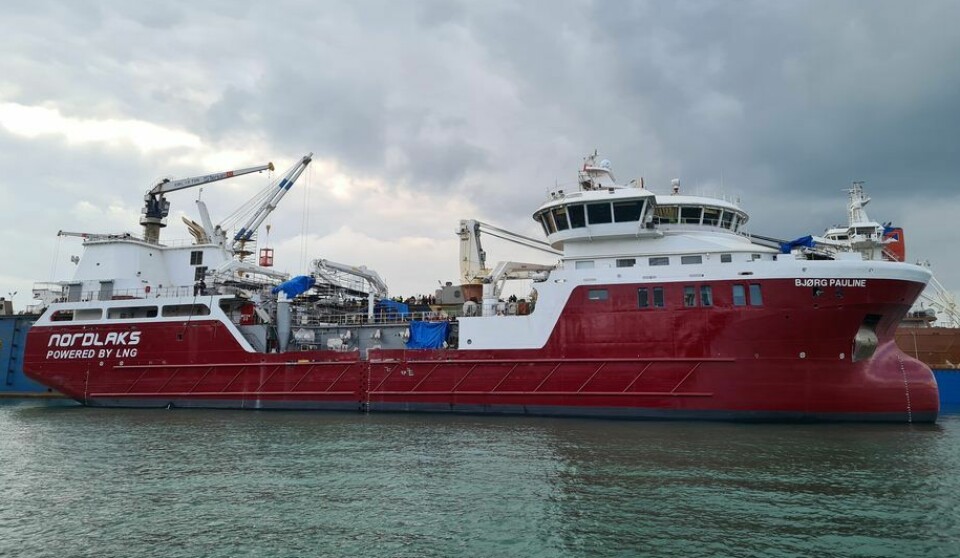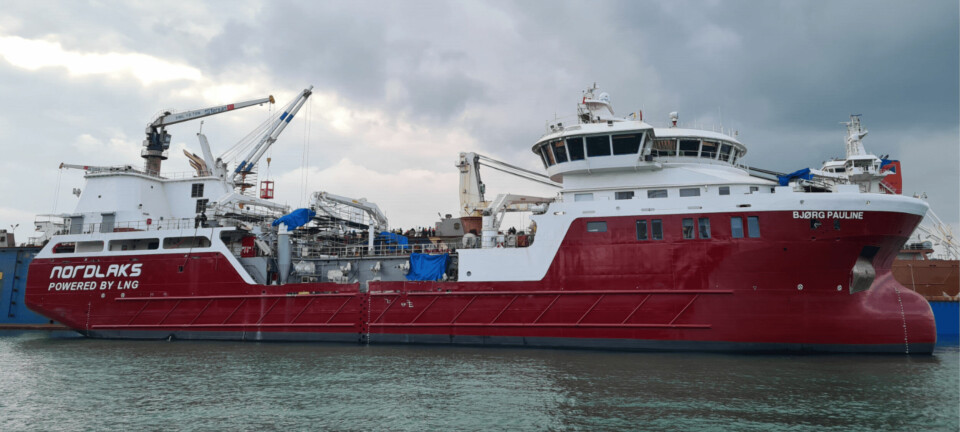
Ground-breaking wellboat plagued with teething troubles
LNG vessel has generator replaced less than two years after entering service
A pioneering wellboat designed and built to serve the Havfarm offshore salmon facility operated by Norwegian company Nordlaks has been plagued by teething troubles and is now having one of four generators replaced after less than two years in operation, it has been reported.
The Bjørg Pauline is the first wellboat to use a combination of liquid natural gas (LNG) and battery hybrid propulsion, which together with a shore power connection reduces overall greenhouse gas emissions by over 20% and NOx emissions by 90%, compared to standard wellboats.
The 84-metre-long Bjørg Pauline and a sister ship, Harald Martin, were designed by NSK Ship Design and constructed by Turkish shipbuilder Tersan. The vessels each have a capacity of 4,300m³, enough to transport more than 600 tonnes of live fish. The Havfarm has a capacity for 10,000 tonnes.
Early problems
Shipowner and Nordlaks owner Inge Berg told the business website Kystens Næringsliv (Coastal Business Life) that both vessels had had a troubled start, with a variety of problems.
The generator that is being replaced in Bjørg Pauline is one of four supplied for the ship by Bergen Engines, which has provided technicians to install a replacement.
Nordlaks technical manager Ove Morten Høyem believes some of the problems other than the generator may have resulted because the shipyard may not have been good enough at utilising the technology Nordlaks had ordered.
“We may not have got the best suppliers for the technology we have chosen, and the main responsibility rests with the shipyard. It’s not easy to get them to take on that responsibility,” he told the website.
A complex picture
The Bjørg Pauline was due for delivery in late 2019, but delays including those cause by the Covid-19 pandemic delayed delivery until 2021, and may also have impacted the build in other ways.
“It was a mix of not being able to bring in subcontractors for Tersan during the pandemic. It is a complex but demanding picture,” said Nordlaks owner Berg.
Høyem told Kystens Næringsliv that he is open to choosing Tersan again, despite the problems Nordlaks has experienced. “Nothing is out of the question and it is an open market. But perhaps a different construction regime at Tersan could change the picture,” he said.
Kystens Næringsliv writes that it has asked Tersan Shipyards about both responsibility and progress, so far without receiving an answer.
Tersan has built many ships, including a number of LNG hybrid and all-electric ferries in use on Norway’s fjords and coast.
























































